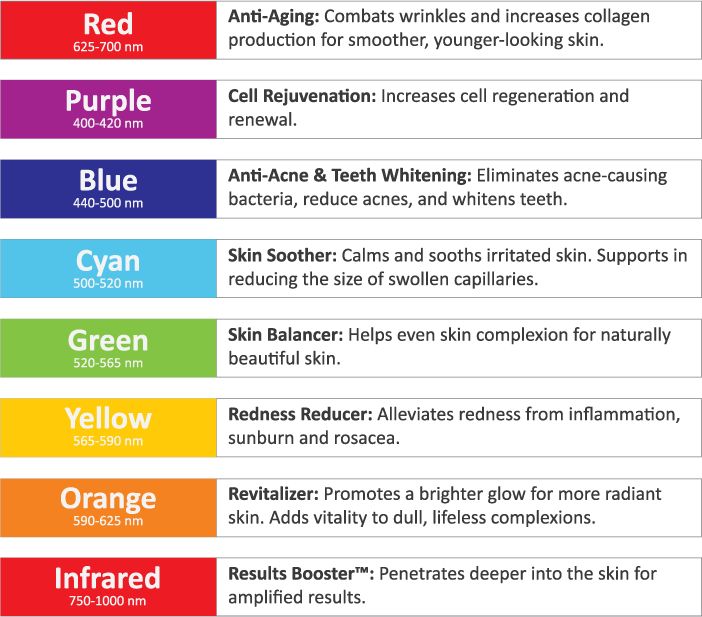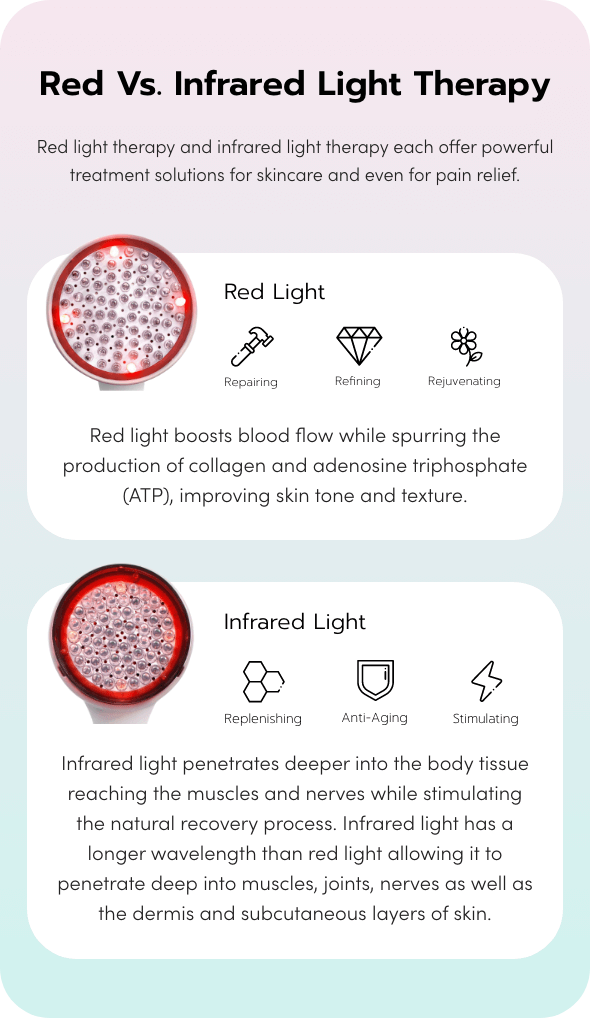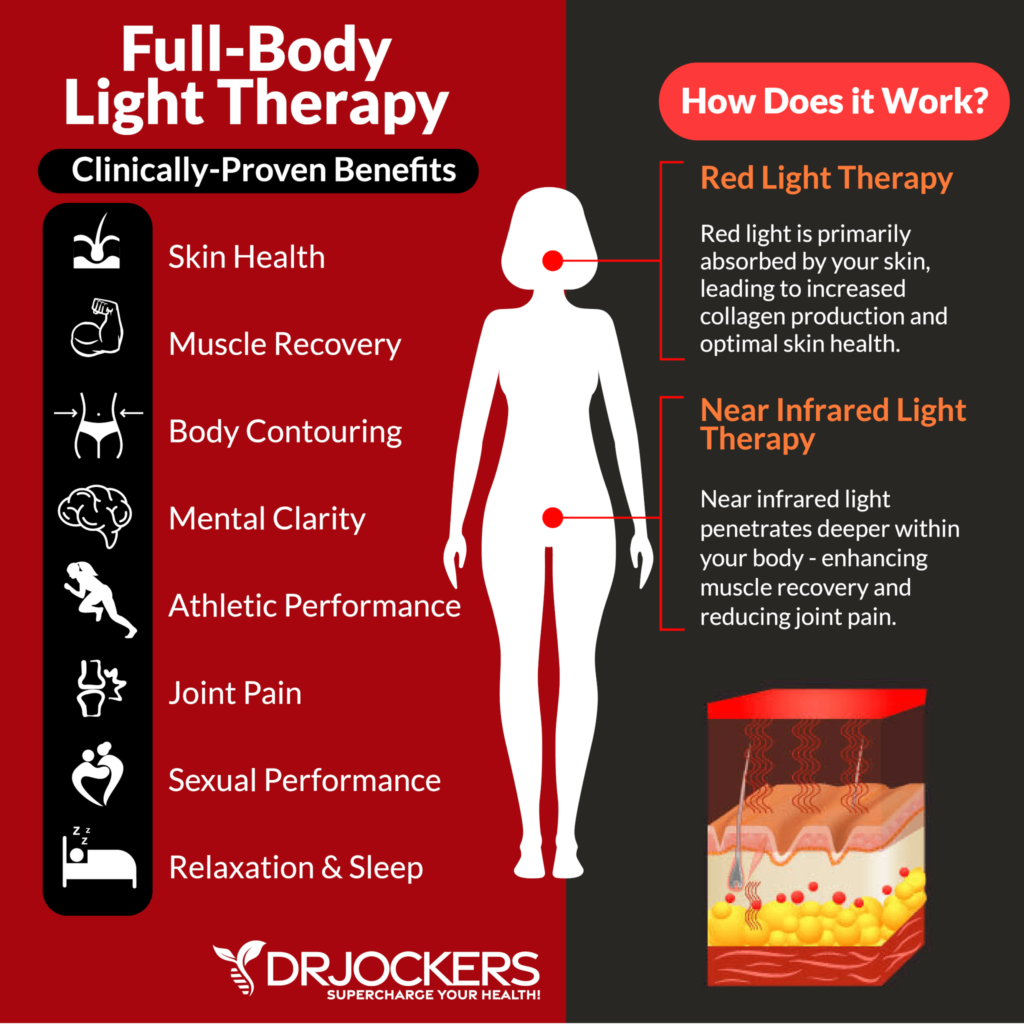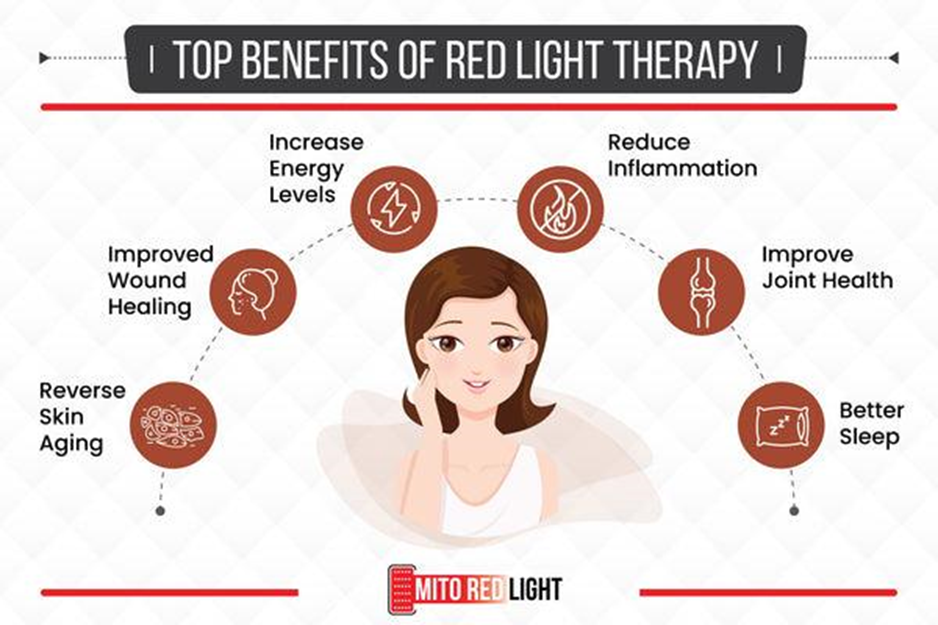Are you feeling tired, low on energy, or experiencing the winter blues? Look no further than light therapy. This article explores the numerous benefits of light therapy, a non-invasive treatment that harnesses the power of light to improve your mood, increase energy levels, and regulate your body’s internal clock. Whether you suffer from seasonal affective disorder (SAD) or simply want a natural and effective way to boost your well-being, light therapy could be the answer you’ve been searching for.
What is Light Therapy
Definition of Light Therapy
Light therapy, also known as phototherapy, is a non-invasive treatment that involves exposure to specific wavelengths of light to mimic natural sunlight. It is used to treat a variety of conditions, including Seasonal Affective Disorder (SAD), depression, sleep disorders, and skin conditions. Light therapy works by triggering biological and psychological responses in the body, promoting overall health and well-being.
History of Light Therapy
Light therapy has a rich history dating back to ancient civilizations. The ancient Egyptians and Greeks used sunlight as a healing tool, recognizing its therapeutic benefits. In the early 20th century, scientists began to study the effects of light on the body more systematically. Since then, light therapy has become a popular treatment option, with advancements in technology and a growing body of research supporting its effectiveness.
Types of Light Therapy
There are several types of light therapy, each targeting different conditions and utilizing specific devices. The most common types include:
-
Bright Light Therapy: This involves exposure to a bright light box that emits full-spectrum white light, similar to natural sunlight.
-
Dawn Simulation Therapy: Dawn simulators gradually increase the light intensity, simulating a natural sunrise, to regulate the body’s biological clock.
-
Blue Light Therapy: Blue light therapy targets specific wavelengths of blue light to alleviate symptoms of skin conditions and regulate sleep patterns.
-
Red Light Therapy: Red light therapy utilizes low-level red light to promote skin health, reduce inflammation, and stimulate collagen production.
Mechanism of Action
Effect of Light on the Body
Light plays a vital role in regulating various physiological processes in the body. When the retina in your eyes detects light, it sends signals to the brain, influencing the release of certain hormones and neurotransmitters.
How Light Therapy Works
Light therapy works by exposing the body to specific wavelengths of light, which mimic natural sunlight. This exposure triggers a series of biological responses, such as increased production of serotonin (a mood-regulating neurotransmitter) and melatonin (a hormone that regulates sleep-wake cycles).
Biological and Psychological Effects of Light Therapy
Light therapy has both biological and psychological effects on the body. Biologically, it helps regulate circadian rhythms, enhance the production of vitamin D, and promote skin health. Psychologically, it acts as a natural mood booster, relieving symptoms of depression and enhancing cognitive function.

This image is property of images.squarespace-cdn.com.
Conditions Treated by Light Therapy
Seasonal Affective Disorder (SAD)
Seasonal Affective Disorder is a type of depression that occurs during certain seasons, typically in the winter months. Light therapy is an effective treatment for SAD, as it helps compensate for the reduced exposure to natural sunlight and alleviate symptoms such as low mood, fatigue, and increased need for sleep.
Depression
Light therapy has shown promising results in the treatment of depression. It can be used as a standalone therapy or in combination with other treatment options, such as medication or psychotherapy. The exposure to light helps regulate mood and enhance serotonin production, leading to a reduction in depressive symptoms.
Sleep Disorders
Sleep disorders, such as insomnia and circadian rhythm disorders, can significantly impact an individual’s quality of life. Light therapy, in the form of bright light exposure or dawn simulation therapy, can help regulate sleep-wake cycles and improve overall sleep quality.
Jet Lag
Jet lag occurs when individuals travel across multiple time zones, disrupting their internal body clock. Light therapy can help reset the body’s circadian rhythm and alleviate the symptoms of jet lag, such as fatigue, irritability, and difficulty sleeping.
Skin Conditions
Certain skin conditions, such as acne, psoriasis, and eczema, can benefit from light therapy. Blue light therapy and red light therapy have been shown to reduce inflammation, improve skin texture, and promote wound healing.
Circadian Rhythm Disorders
Disruptions to the natural circadian rhythm, such as those experienced in shift work or delayed sleep phase syndrome, can adversely affect an individual’s health and well-being. Light therapy can help regulate these circadian rhythm disorders by establishing a consistent light-dark cycle.
Benefits of Light Therapy
Non-Invasive and Safe
Light therapy is a non-invasive and safe treatment option that does not involve any medication or invasive procedures. It is well-tolerated by most individuals and has minimal side effects.
Natural Mood Booster
Exposure to light, particularly bright light, can have a positive impact on mood. Light therapy helps stimulate the production of serotonin, a neurotransmitter that plays a crucial role in regulating mood and well-being.
Regulates Sleep Patterns
By mimicking natural sunlight and influencing the release of melatonin, light therapy helps regulate sleep-wake cycles. It can be especially beneficial for individuals with sleep disorders or those experiencing jet lag.
Improves Cognitive Function
Light therapy has been shown to enhance cognitive function, including attention, memory, and processing speed. It can be particularly beneficial for individuals experiencing cognitive decline or seasonal cognitive impairment.
Enhances Vitamin D Production
Exposure to natural sunlight helps the body produce vitamin D, essential for bone health, immune function, and overall well-being. Light therapy can help increase vitamin D production, especially in individuals with limited sun exposure.
Treats Seasonal Affective Disorder
One of the primary uses of light therapy is in the treatment of Seasonal Affective Disorder. It has been proven to be an effective and well-tolerated treatment option, reducing the symptoms associated with winter depression.
Reduces Symptoms of Depression
Light therapy has been shown to be an effective treatment for depression, either as a standalone therapy or as an adjuvant to other treatment modalities. It can help alleviate symptoms such as low mood, loss of interest, and decreased energy levels.
Increases Energy Levels
Exposure to bright light in the morning can help increase energy levels and promote alertness throughout the day. Light therapy can be particularly beneficial for individuals experiencing fatigue or low energy levels.
Promotes Skin Health
Certain types of light therapy, such as blue light therapy and red light therapy, have been proven to improve skin health. Blue light therapy targets acne-causing bacteria, while red light therapy stimulates collagen production and reduces inflammation.
Alleviates Sleep Disorders
Light therapy can be an effective treatment option for sleep disorders, such as insomnia or circadian rhythm disorders. By regulating sleep-wake cycles, it can help improve sleep quality and overall well-being.

This image is property of www.freedomfloatcentre.com.au.
Light Therapy Devices
Light Boxes
Light boxes are the most commonly used light therapy devices. They emit bright, full-spectrum light that mimics natural sunlight. These devices are available in a variety of sizes and intensities, allowing individuals to customize their light therapy experience.
Dawn Simulators
Dawn simulators are designed to simulate a natural sunrise by gradually increasing light intensity over a specific period of time. These devices can be particularly effective for individuals who have difficulty waking up in the morning or those with circadian rhythm disorders.
Light Visors
Light visors are portable devices that can be worn on the head, allowing individuals to receive light therapy while engaging in other activities. These devices are convenient for individuals who require mobility during their light therapy sessions.
Light Bulbs
Light therapy bulbs can be used to convert existing light fixtures into light therapy sources. These bulbs emit bright, full-spectrum light and can be used in lamps or overhead fixtures.
Light Therapy Glasses
Light therapy glasses are a wearable option for light therapy. They are equipped with LED lights that emit specific wavelengths of light, allowing individuals to receive light therapy while on the move.
How to Use Light Therapy
Choosing the Right Light Therapy Device
When choosing a light therapy device, it is important to consider factors such as light intensity, duration of exposure, and specific condition being treated. Consulting with a healthcare professional or light therapy specialist can help determine the most suitable device for individual needs.
Proper Distance and Duration
The distance between the individual and the light therapy device, as well as the duration of exposure, may vary depending on the device and the condition being treated. It is important to follow the manufacturer’s guidelines and any recommendations provided by healthcare professionals.
Best Time of Day for Light Therapy
The timing of light therapy sessions can vary depending on the specific condition being treated. Generally, morning exposure to bright light is recommended for individuals with Seasonal Affective Disorder or sleep disorders. However, consulting with a healthcare professional can help determine the optimal time for light therapy sessions.
Safety Precautions
While light therapy is generally safe, certain precautions should be taken. Protecting the eyes by wearing eye protection or looking away from the light source can help prevent potential eye strain. Individuals with certain medical conditions, such as bipolar disorder or sensitivity to light, should consult with a healthcare professional before starting light therapy.
Frequency of Use
The frequency of light therapy sessions may vary depending on the condition being treated. Some individuals may benefit from daily sessions, while others may require less frequent exposure. It is important to follow the recommended guidelines provided by healthcare professionals and adjust the frequency as needed.

This image is property of ledtechnologies.com.
Effectiveness of Light Therapy
Research Studies
Numerous research studies have demonstrated the effectiveness of light therapy in treating various conditions. These studies have shown significant improvements in mood, sleep quality, and cognitive function in individuals receiving light therapy.
Comparison with Other Treatment Options
Light therapy has been compared to other treatment options, such as medication or psychotherapy, for conditions such as depression. While individual responses may vary, light therapy has been found to be equally effective or even more effective in certain cases.
Potential Side Effects and Risks
Light therapy is generally safe and well-tolerated. However, some individuals may experience mild side effects, such as eye strain, headache, or nausea. Rarely, light therapy may trigger manic or hypomanic episodes in individuals with bipolar disorder. It is important to consult with a healthcare professional if any side effects are experienced.
DIY Light Therapy
Maximizing Natural Light Exposure
One way to incorporate light therapy into daily life is by maximizing natural light exposure. Spending time outside, particularly in the morning or early afternoon, can help regulate circadian rhythms, boost mood, and enhance overall well-being.
Creating a Light Therapy Routine at Home
Creating a dedicated space for light therapy at home can help establish a consistent routine. This can involve setting up a light box in a quiet and comfortable area, ensuring proper distance and positioning, and scheduling regular light therapy sessions.
Integrating Light Therapy into Daily Life
In addition to dedicated light therapy sessions, integrating light therapy into daily life can be beneficial. This can include opening curtains or blinds to allow natural light into living spaces, using light therapy bulbs in lamps or overhead fixtures, or wearing light therapy glasses during outdoor activities.

This image is property of drjockers.com.
Professional Light Therapy
Light Therapy in Clinical Settings
In a clinical setting, light therapy can be administered by healthcare professionals, such as psychiatrists, psychologists, or sleep specialists. These professionals can provide personalized recommendations, monitor progress, and adjust treatment as needed.
Consulting with a Healthcare Professional
Individuals considering light therapy for the treatment of specific conditions, such as depression or sleep disorders, should consult with a healthcare professional. These professionals can offer guidance, make appropriate recommendations, and ensure the safe and effective use of light therapy.
Conclusion
Light therapy is a powerful and versatile treatment option that offers numerous benefits for various conditions. From addressing seasonal affective disorder and depression to improving sleep patterns, cognitive function, and skin health, light therapy has the potential to enhance overall well-being. As research continues to advance and technology evolves, the future of light therapy holds promise for even more innovative and effective solutions. By incorporating light therapy into daily life, individuals can experience the positive effects of light on the body and mind.

This image is property of www.renewed-vitality.com.

